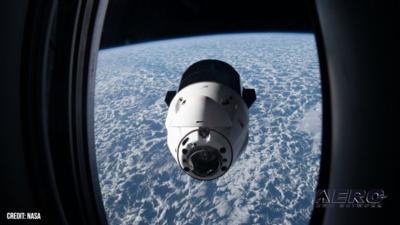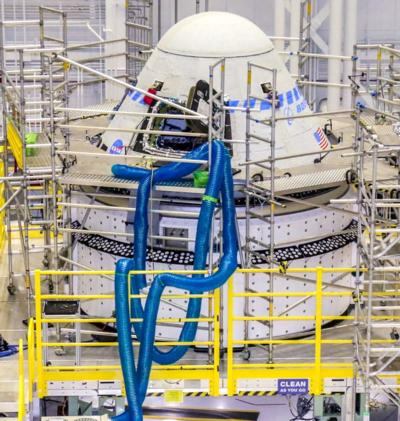Crew Dragon Soars as Starliner Stumbles
Thanks in large part to Boeing’s ineptitude—as evinced by the commercial aircraft titan’s chronic inability to get its Starliner program squared away—SpaceX has assumed de facto agency over the Western market for manned orbital spaceflight, and will likely dominate the sector throughout the 2020s.

For purpose of securing its astronauts' passage to the International Space Station (ISS) through 2030, NASA has finalized plans to purchase another five Crew Dragon launches from SpaceX. The agreement marks the eighth Crew Dragon launch NASA has purchased in the last six-months and doubles the spacecraft’s future launch manifest.
In all, NASA’s planned Crew Dragon missions now number 14. The five newly-purchased launches will cost the Space Agency (read “U.S. Taxpayers”) $1.44-billion and raise the total value of SpaceX’s Crew Dragon Commercial Crew Transport Capability (CCtCap) contract to $4.93-billion.
Taking into account the approximately $2.74-billion it shelled-out to fund Crew Dragon’s development, NASA will ultimately pay an average of $328-million per-launch across the entirety of the spacecraft’s past and planned flights. Ergo, assuming every space-bound Crew Dragon carries four astronauts, the average per-astronaut seat-price through 2030 will be $85 million—roughly the cost of two factory-new Embraer E175-E2 regional airliners.
However, the Biden Era inflation that’s driven and continues to drive energy, housing, and food costs beyond the means of many Americans is apt to discount NASA’s future per-astronaut seat-price to a comparatively modest $72-million. The math is simple and works out thus: the $288-million-per-launch upon which NASA’s current SpaceX contract is predicated—assuming an annual inflation rate of 2.5%—will be worth around $235-million by the time the launches are completed in 2030. As SpaceX, after the peculiar fashion of NASA’s business orthodoxy—receives no payment until after its services have been rendered, Elon Musk and his intrepid boffins stand to find themselves on the receiving end of a bad joke eight-years in the telling.
NASA’s decision to cast its lot with SpaceX is a major blow to Boeing’s Starliner program, which—aside from six launches guaranteed by the original 2014 CCtCap awards—has received zero additional orders for spaceflights.

Once said to be “well positioned to fly [its] first crew in early 2020,” Boeing’s Starliner finally completed its first quasi-successful uncrewed test flight in May 2022. At the time of this writing, Boeing and NASA anticipate a February 2023 launch date for Starliner’s first crewed test flight, with the vehicle’s first operational astronaut launch—assuming no setbacks—occurring in late 2023.
NASA’s fixed-price contract with Boeing precludes the agency’s having to cover the almost $700-million lost to years of Starliner delays and do-overs. Nevertheless, the space agency remains obligated to fork over $5.1-billion in Starliner fees—a figure that represents an extraordinary, eye-watering, per-launch-rate of $850-million [over six planned missions]. American taxpayers are likely to fall into an ill humor when they learn NASA is paying Boeing a per-astronaut seat-price of $170-million through 2030.
Unless it finds a commercial customer contemporaneously inclined to eschew SpaceX and burn hundreds of millions of dollars, Boeing may never recoup the losses it’s racked-up developing Starliner. Worse yet, in the absence of Boeing delving even more deeply into its own pocketbook for funds by which to certify Starliner to launch atop a rocket other than the Atlas V, Delta IV, or Falcon 9, the capsule will find itself without a launch vehicle after its sixth operational mission.
 Classic Aero-TV: In Praise of Alabamas Patriot Aircraft USA
Classic Aero-TV: In Praise of Alabamas Patriot Aircraft USA NTSB Final Report: Cirrus Design Corp SR22
NTSB Final Report: Cirrus Design Corp SR22 ANN's Daily Aero-Term (12.21.25): Dead Reckoning
ANN's Daily Aero-Term (12.21.25): Dead Reckoning ANN's Daily Aero-Linx (12.21.25)
ANN's Daily Aero-Linx (12.21.25) Aero-News: Quote of the Day (12.21.25)
Aero-News: Quote of the Day (12.21.25)




